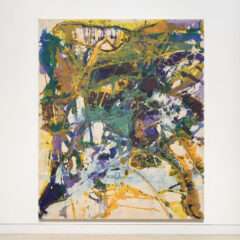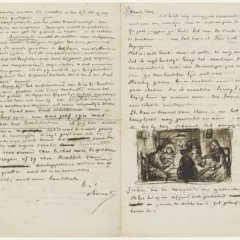On the art page in the Weekly is my review of the Thomas Chimes retrospective at the Philadelphia Museum of Art. Below is the copy with some pictures. For more photos see my flickr set.
Chimes Ringing on Museum Hill
A Philly artist gets his due.
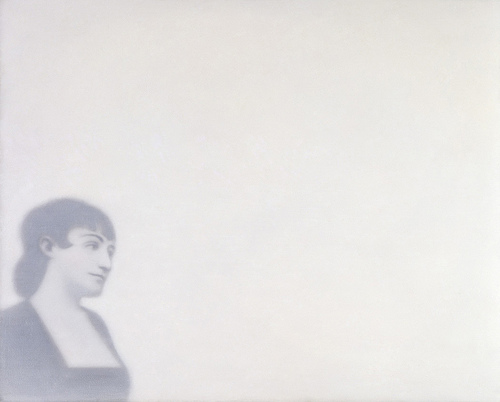
Rachilde, 1986, Thomas Chimes (American, born 1921). Oil on linen, 50 x 62 inches. Locks Gallery, Philadelphia
People tell me they love Thomas Chimes‘ white paintings—minimalist works portraying a face or object trapped under a snowstorm of white paint. I don’t get it, except that many people also like white walls, white cars, white towels and white sheets.
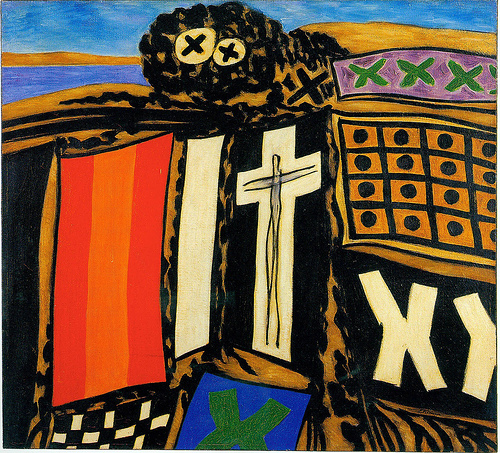
Untitled, 1961, Thomas Chimes (American, born 1921). Oil on linen, 18 ½ x 20 ½ inches. Locks Gallery, Philadelphia
Chimes, 86, a Philadelphia artist who’s the subject of a well-deserved 50-year retrospective at the PMA, is far more interesting when he’s painting impassioned, almost outsiderish landscapes with bold Mediterranean colors and primitive patterns (as he did in the 1960s). Or when he’s riveting sheets of aluminum together and painting the words “master(bation)” and “own(anism)” on them (as he did in the 1970s).
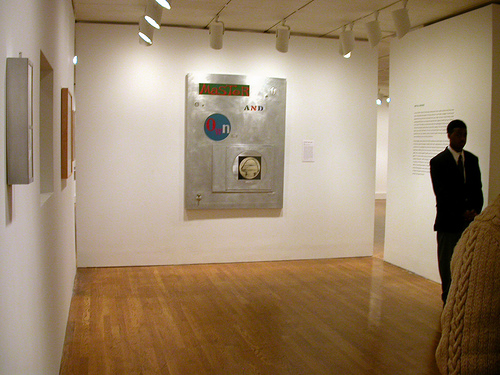
Chimes’s metal collage works, like Master and Own.
And he’s really great when you look at his work from the last 10 years—small paintings of gem-like elegance and perfection that evoke everything from game pieces and coins to circuit boards and the iPod control.
The PMA show, with its big, beautiful catalog, explains the artist’s obsession with the French visionary writer Alfred Jarry and Jarry’s most famous creation, the monstrous Ubu Roi. And while that’s all nice to know, it’s more important to let Chimes’ obsession form the backdrop and let yourself appreciate the charm, polish and visual pleasure of the art itself.
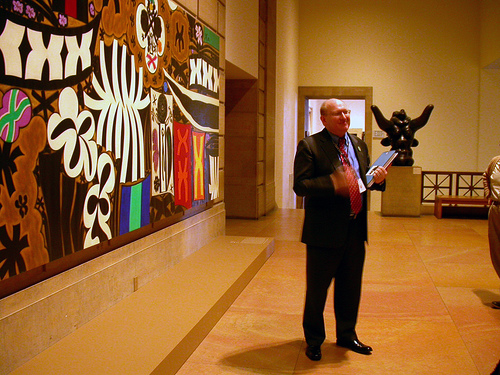
Chimes came up at a time when gestural abstraction was in vogue. His genius was to reject the fashion and paint his own inner passion. From the beginning the artist embraced signs and symbols. Early on, the symbols seemed to come from his heritage, with crosses and stylized letters from the Greek alphabet. These works, which evoke not only Matisse but also the black-edged obsessive works of Swiss outsider artist Adolph Wolfli, are bold and take no prisoners. They don’t mean to be likable, but they are. They’re also highly energetic and engaging.
During World War II the artist fixed fighter planes and became accomplished with metals. And his 1970s art reflects this with a series of box-like metal assemblages that include painted components. These works, a couple of which remind me of Joseph Cornell boxes, are playful, and reference both the world of machines and electronics as well as the human body, creating a man-machine conflation that may be an homage to another Chimes hero, Marcel Duchamp. (Duchamp’s Nude Descending a Staircase and Large Glass both depict the mechanized human.)
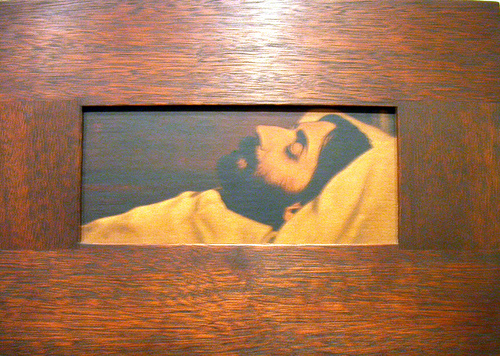
One of the sepia-toned portraits. Each work is framed differently and beautifully.
Chimes’ sepia-hued portraits of his inspirations—artists and writers from Jarry and Joyce to Duchamp, made immediately before the white paintings came on the scene in the 1980s—are a mournful and elegiac series of works. With dark wood framing that’s prison- or casket-like, the works brood—reflecting the artist’s dark state of mind at a time when his marriage was crumbling.
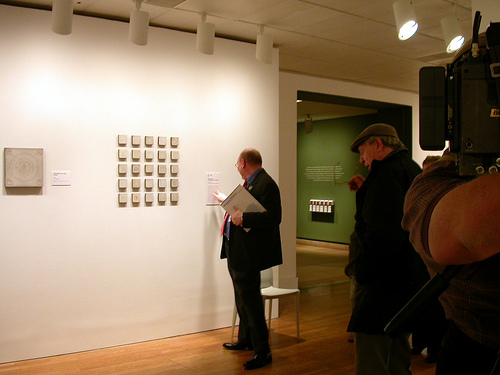
Chimes (right in hat) with Michael Taylor in front of Untitled (Finnegan’s Wake)
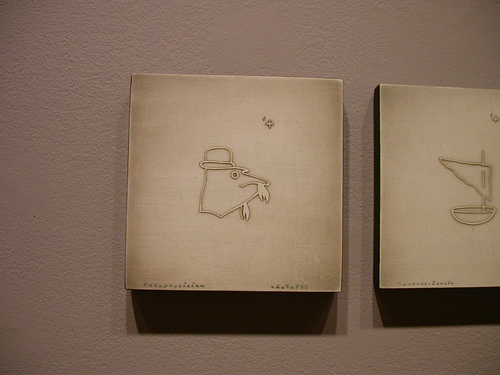 Thomas Chimes. Paintings from Locks Gallery companion show which focuses on works from the last fifteen years or so.
Thomas Chimes. Paintings from Locks Gallery companion show which focuses on works from the last fifteen years or so.
The newest work Untitled (Finnegan’s Wake) (2000-2006) consists of 25 paintings, each 3 inches by 3 inches, in a gameboard-like grouping. Playful and sometimes mystical, it’s a calm and sweet coda to a long career. At Locks Gallery, which has long represented Chimes, many of the works are sold—a nice affirmation for an artist who’s finally getting his 15 minutes.
“Adventures in Pataphysics”
Through May 6. Philadelphia Museum of Art, 26th St. and the Pkwy. 215.763.8100.
“The Entropy Paintings”
Through April 14. Free. Locks Gallery, 600 Washington Sq. South. 215.629.1000.



